Parc national Uibongsanseong (위봉산성군립공원)
0m 24439 2024-04-07
Région Jeonbuk, Wanju-gun, Soyang-myeon, Wondaeheung-gil 136-3
Le parc national Uibongsanseong, situé à Jeonju, est un site prisé pour les longues promenades au milieu de la nature et des arbres de saison, notamment les arbres de cerisiers.
Temple Songgwangsa (Wanju) (송광사(완주))
305.26103787820745m 14494 2024-04-07
255-16, Songgwangsuman-ro, Wanju-gun, Région Jeonbuk
+82-63-243-8091
Le temple Songgwangsa se trouve à Soyang-myeon, Wanju-gun dans la province du Jeollabuk-do. Le temple est vieux de plus de mille ans. Seul le terrain du temple avait été conservé jusqu’à la 7ème année du règne du roi Gyeongmun de Silla (867), quand le moine Bojo Cheijing l’a reconstruit. Au fil du temps, le temple fut quasiment détruit, mais le grand moine Jinul pria pour sa reconstruction. Les halls et bâtiments restants ont été construits par les disciples du moine Jinul dans les années 1600. Le temple est également réputé du fait que le roi Injo a contribué à sa reconstruction dans l’espoir que ses deux fils, qui avaient été pris en otage par la dynastie Qing durant la guerre Byeongjahoran (invasion de la Corée par la Chine en 1636) reviennent sains et saufs, et que Bouddha soulage les tourments de la guerre.
Songgwangsa est l’un des quatre principaux temples de Corée, et abrite les statues de Jijangbosal et Siwangsang conservées dans le hall Jijangjeon (le plus grand hall), la statue Seokgayeorae et les 500 statues Nahansang dans le hall Nahanjeon et le hall Daeungjeon, chacune d’entre elles attirant des foules d’adorateurs. Le temple se trouve sur un terrain plat, et il est ainsi facilement accessible aux personnes âgées. Au printemps, les tunnels de cerisiers en fleurs sont tout simplement magnifiques. Le temple abrite également quatre trésors culturels : le hall Daeungjeon, les statues Samsebulsang, le clocher et la statue Sacheonwangsang, ainsi que huit biens culturels tangibles.
NocWoonJae [Korea Quality] / 녹운재 [한국관광 품질인증]
2.1 Km 6131 2024-04-07
472-18, Songgwangsuman-ro Soyang-myeon, Wanju-gun, Région Jeonbuk
+82-10-4450-6565
'As a traditional Korean house with floor area of 99m², Nocwoonjae has been in business since 2014 in Oseong Hanok Village, Wanju-gun, Jeollabuk-do. The name 'Nocwoonjae' means 'a house with a green cloud hanging over it' in Korean. It was named as such because of the green broad-leaved and coniferous trees along the foot of the mountain in the vicinity of the guesthouse. The entrance way is lined with flowers and trees, leading to two Korean houses connected by an open hallway. The guesthouse is owned by two sisters who built this place after staying at many of the popular 'hanok (traditional Korean house)' guesthouses in other parts of the country. It was a dream come true for them, so they did everything in their power to make their place perfect by choosing the building materials themselves, even the tiles. Because the exterior walls are made of red clay and tiles, it's cool in summer and warm in winter. There is also a large wooden floor hall where guests can enjoy the nature. The rooms are decorated with embroidered cotton sheets and antique furniture. Both of the sisters are amateur oriental painters specializing in painting the 'Four Gracious Plants (Plum, Orchid, Chrysanthemum, and Bamboo)', so they even made the lamps with traditional Korean paper with their paintings on them. Indeed, they did everything they could to make this place as pretty as possible.
The two traditional Korean houses named Naunchae and Unachae are built on a natural slope without harming the nature. The two houses are connected by a hallway with windows, so guests can sit on the staircase to enjoy the view outside. The 'Naunchae,' which means 'silky cloud' in Korean, consists of a room, an attic, a kitchen, a hall, and a bathroom. From the attic, you can have a great view of the trees and pine grove through the window. Right behind the house are the strawberry garden and stone walls for the guests to relax. The walls and floor of the room are made of red clay and natural wood with a pleasant natural aroma, which is good for the mind and body. The kitchen walls are made of colorful tiles and wood, with a large window right next to it offering a great view of the pine grove. In the main hall, guests can throw open the large window and lay on the wooden floor to look at the nature and enjoy the breeze.
The 'Unachae,' which means 'beautiful cloud' in Korean, consists of tea room, guestroom, kitchen, hall, and bathroom. It's very similar to the 'Naunchae,' except for the long window next to the kitchen and a table underneath it. The guesthouse sometimes offers special discounts, so be sure to ask about them when booking a room.
There are different types of flowers in the front yard, including cosmos, rose moss, and cockscomb. The sisters also grow corn, sorghum, strawberries, persimmon, jujube, and plum trees there. In the harvest season, guests can pick and try the fruits and vegetables. The sisters also offer a number of experience programs, such as Oriental painting class where you can grind the ink stick and paint the Four Gracious Plants on traditional Korean paper and tea class where you can try the tea made of the persimmon leaves and flowers grown by the owners. Breakfast includes toast, jam, and milk. There is a kitchen, so you can cook whatever you want. Popular tourist destinations in the vicinity of the guesthouse include Songgwangsa Temple and Wibongsa Temple as well as the 60m-high Wibong Falls, one of the Eight Views of Wansan Mountain. Jeonju Hanok Village is a 20-minute ride from the guesthouse.
Village des hanok Oseong (오성한옥마을)
2.2 Km 0 2024-04-08
Région Jeonbuk, Wanju-gun, Soyang-myeon, Daeheung-ri
Le village des hanok Oseong, situé à Wanju abrite près de 200 maisons traditionnelles au milieu de plusieurs monts, zone qui abrite encore des résidences permanentes. Le lieu abrite également plusieurs petits cafés et des galeries d'artistes vous permettant d'effectuer des promenades relaxantes. Le lieu a servi également de lieu de tournage pour le groupe BTS lors du prgramme ‘BTS 2019 SUMMER PACKAGE’.
Oseongje Jeosuji (오성제 저수지)
2.3 Km 0 2024-04-07
Région Jeonbuk, Wanju-gun, Soyang-myeon, Daeheung-ri
L'espace Oseongje Jeosuji désigne un espace de repos et de promenade à Wanju. Le lieu est réputé pour ses zones de photo mais aussi pour avoir servi de lieu de tournage pour le groupe BTS en 2019 (Summer Package).
Temple Wibongsa (위봉사)
3.2 Km 7793 2024-04-07
750, Songgwangsuman-ro, Soyang-myeon, Wanju-gun, Région Jeonbuk
+82-63-243-7657
Situé sur le mont Juchulsan, la forteresse Wibongsanseong a été construite en 1675 durant 7 ans, pour mettre en lieu sûr le portrait du roi Taejo, qui était autrefois conservé à Gyeonggijeon dans la ville de Jeonju. Durant la révolution paysanne de Donghak, le portrait du roi Taejong a été déplacé dans la forteresse. A l’origine, la forteresse mesurait 16 km de long, 4 à 5 m de haut et 3 m de large. Elle possédait trois portes et trois portes d’urgence. A présent, seules subsistent une petite portion de la forteresse et de la porte de l’Ouest.
Une fois passé la porte Mujigaemun (porte de l’arc-en-ciel) et le village de Wibong, on arrive au temple Wibongsa, l’un des principaux temples de la région du Honam, qui abritait autrefois 52 temples annexes. On dit que c’est le moine Seoam qui a bâti le temple Wibongsa en l’an 604 (5ème année du règne du roi Mu de la dynastie Beakje). Les bâtiments rescapés datent de la dynastie Joseon. Aujourd’hui, seuls demeurent le Bogwangmyeongjeon (trésor n° 608), le Yosa (bien culturel provincial n° 698) et le Samseonggak. La peinture murale Baeguigwaneumbosal est la fierté du temple.
Cascade d'Uibong (위봉폭포)
3.3 Km 12075 2024-04-07
Daeheung-ri, Soyang-myeon, Wanju-gun, Région Jeonbuk
+82-63-290-3930
Situé à l’Est de la forteresse de Wibongsanseong, la cascade de Wibong est une chute d’eau à deux niveaux haute de 60 m. Cette célèbre cascade comptait autrefois parmi les Huit plus beaux paysages de Wansan. Les rochers aux formes étranges, ainsi que les épais bosquets près de la cascade forment un magnifique tableau. Non loin de là se trouve l’ancien champ de battaille de la guerre Ungchi (monument de la province du Jeollabuk-do n° 25) où les habitants de la région ont férocement combattu l’envahisseur japonais durant la guerre Imjin. On y trouve aussi le temple Songgwangsa au pied du mont Jongnamsan, et le réservoir Dongsang, le réservoir Daea et les sources chaudes Hwasim sur le courant inférieur.
Happydream [Korea Quality] / 행복드림한옥 [한국관광 품질인증]
3.9 Km 9895 2024-04-07
181-21, Bongseoan-gil, Yongjin-eup, Wanju-gun, Région Jeonbuk
+82-10-3677-5339
The Dueok Happy Dream Village Farming Association Corporation runs a hanok-style guesthouse situated in Dueok Happy Dream Village, which is surrounded by high, clean mountains. Also known as Bongseogol, the village is a pleasant farming community located deep in the lush green mountains of Wanju-gun, Jeollabuk-do, and is also well known as one of the eight best propitious sites in Korea – Jongnamsan Mountain on its right and Seobangsan Mountain on its left are said to resemble a phoenix('Bonghwang' in Korean) embracing the village (hence the name of the village is ‘Bongseo’).
Dueok Village was re-born as Dueok Happy Dream Village as part of the rural village revitalization project carried out in Wanju County. The village has jointly run diverse hanok buildings (ranging from about 45 to 150 years old) as hanok-style guesthouses, along with various hands-on programs, since 2010. The Dueok Happy Dream Village Farming Association Corporation now runs the guestrooms and a large experience center, and only accepts groups of guests. The experience center offers education programs on traditional etiquette, and also operates reenactments of the ancient civil service examination. It also offers guests three good meals a day consisting of rural-style healthy food served with wild vegetables and various side dishes at a reasonable price.
The guesthouse comprises tile-roofed houses on both sides set amid a large grassy field against a background of green mountains. The guestrooms feature a simple yet pleasant design and are equipped with ondol (under-the-floor heating) without air-conditioning. The experience center is notable for its ten doors which can be opened by lifting them up toward the ceiling, thereby providing an open view of the beautiful landscape.
Furthermore, the village, which has been designated as a rural experience and recreational village, runs a wide variety of hands-on programs, including a Nature Experience program consisting of a forest tour with a guide, Making a Wish Necklace, Walking on the Myeongdang (propitious site), Rice Farming, Digging Sweet Potatoes, Traditional Folk Games (archery, steel hoop rolling), Rice Cake Pounding, Making Scarecrows, and Making a Kite, among others. It also offers Sori Hakdang and etiquette education programs as a two-day course.
Daeseung Hanji Village & Hanok Traditional Culture Experience Center [Korea Quality] / 대승한지마을한옥전문화페험관 [한국관광 품질인증]
5.5 Km 4579 2024-04-07
18-4, Bogeun-gil, Soyang-myeon, Wanju-gun, Région Jeonbuk
+82-63-242-1001
Daeseung Hanji Village in Wanju County, Jeollabuk-do Province was part of Jeonju City from the time of the Baekje Dynasty until 1935, when Wanju County was separated from Jeonju City. The village has been famous for the production of hanji (traditional Korean paper handmade from mulberry tree) since the Goryeo Dynasty, and is the origin of the world-famous ‘Goryeo Paper.’ Most of the villagers were still employed in producing and selling hanji until a few years ago, but these days they work in various businesses including farming and stock farming. However, the hanji masters continue to preserve and promote the hanji tradition through the Hanji Exhibition Hall and Experience Center and other activities.
Surrounded by low hills (Seungraebong and Duribong), the village consists of farmhouses, cattle sheds, old hanok houses, the site of the seodang (village school), and a pavilion, and has traditional games including a swing and tuho (stick throwing).
The center is composed of hanok accommodation, the Hanji Experience Center, and the Hanji Craft Exhibition Hall set amid a quiet, clean environment.
In particular, the Hanji Experience Center provides various interesting and reasonably-priced hands-on experience programs for people of all ages including kindergarten children, such as making hanji, hanji fans, hanji shoes, hand mirrors, hanji masks, instruments, pencil holders and so on.
The hanok accommodation has eight guestrooms, each of which features a large window and is equipped with a modern-style bathroom, 40-inch TV, air-conditioner, refrigerator, dressing table, etc. The rooms are decorated with wooden and hanji materials in a simple yet elegant style. The house has also a seminar room (66m2) equipped with a beam projector for group seminars. The separate restaurant provides Korean-style meals, and guests can also use the kitchen.
As the house is surrounded by a pine grove, guests can appreciate the clean air scented with pine anywhere in the house.
Espace culturel Nu-e (복합문화지구 누에)
7.9 Km 0 2024-04-08
462-9, Wanju-ro, Wanju-gun, Région Jeonbuk
Nu-e désigne un complexe culturel situé à Wanju-gun dans la région de Jeollabuk-do, inauguré sous le thème de "un espace de vie où chacun communique à travers l'art". En tant que projet de restructuration culturelle, il a été décidé de construire le site dans la région de Jeollabuk-do Jameop (silkworm business) avec notamment différents programmes culturels et éducatifs. Parmi les différentes structures, on compte le 'Nu-e Art Hall' proposant différentes expositions et spectacles mais aussi une guesthouse dénommée 'Sum', un espace de camping, des espaces ateliers, etc. Le site propose aussi l'espace "Dreaming Nu-e Playground" pour les enfants.
Il est aussi recommandé de visiter le 'Jeonbuk Provincial Museum of Art' et le 'Samnye Culture and Art Village', de grands sites touristiques à Wanju-gun.
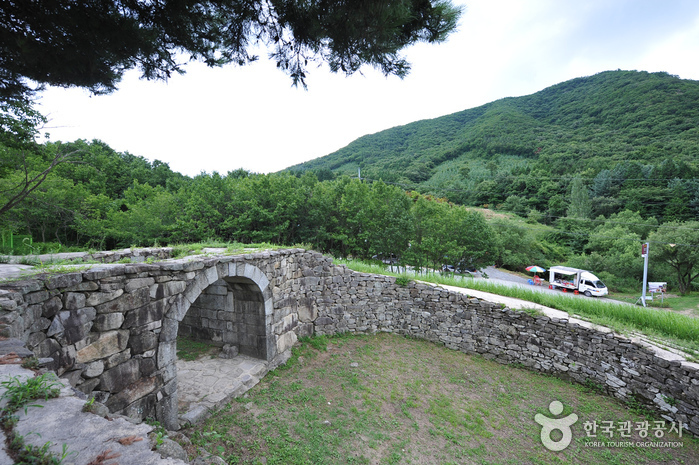
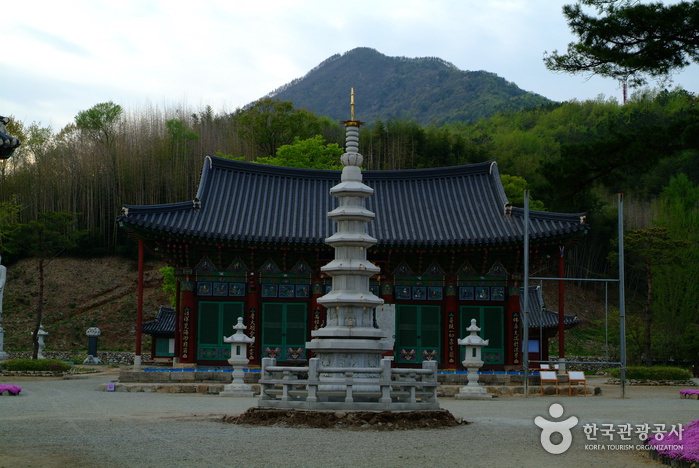
![NocWoonJae [Korea Quality] / 녹운재 [한국관광 품질인증]](http://tong.visitkorea.or.kr/cms/resource/71/2049271_image2_1.jpg)
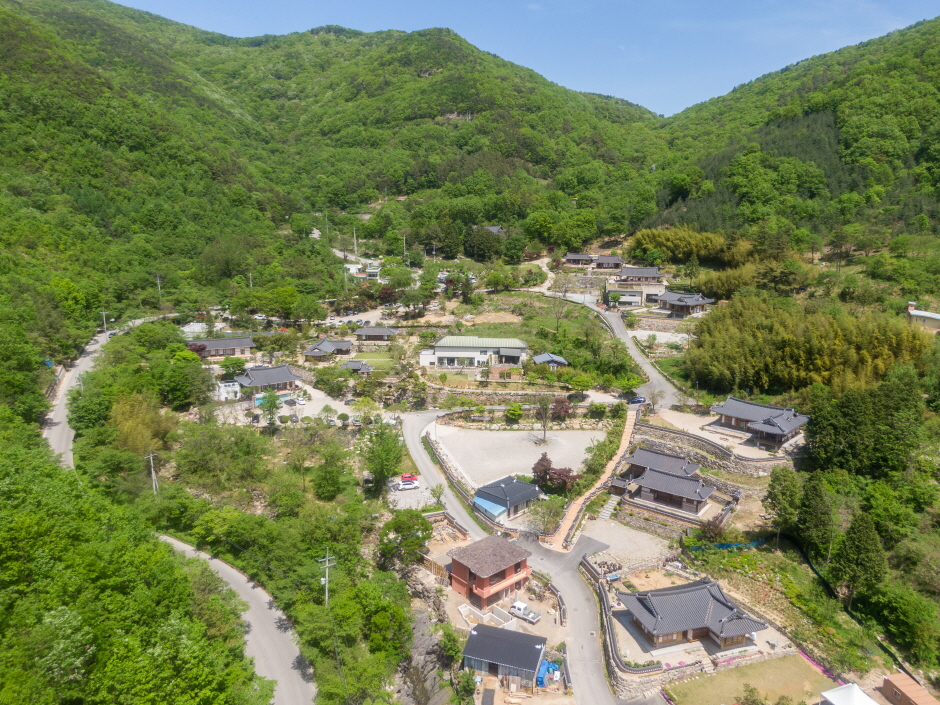
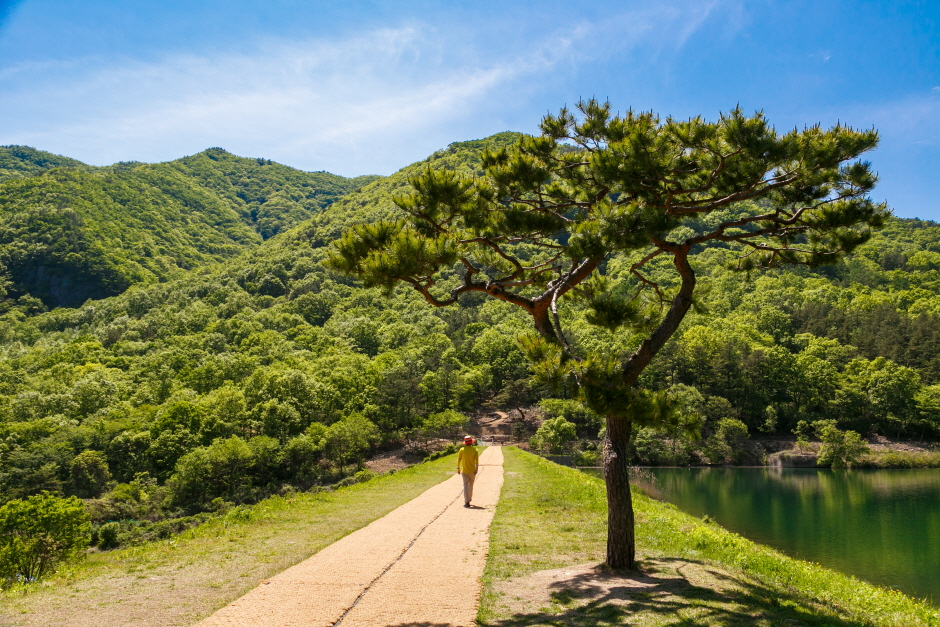
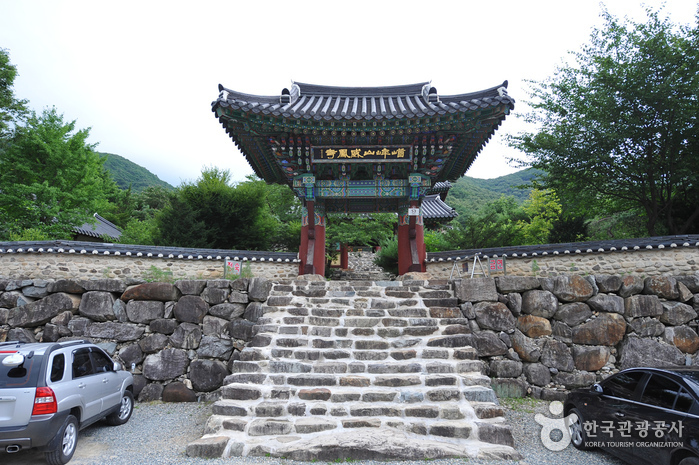
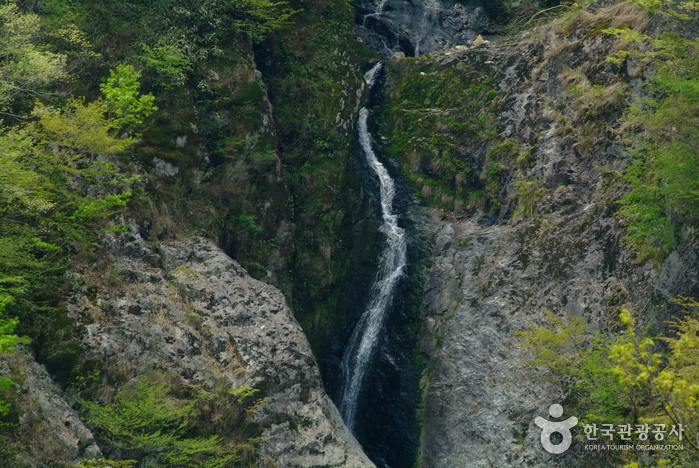
![Happydream [Korea Quality] / 행복드림한옥 [한국관광 품질인증]](http://tong.visitkorea.or.kr/cms/resource/23/2576423_image2_1.jpg)
![Daeseung Hanji Village & Hanok Traditional Culture Experience Center [Korea Quality] / 대승한지마을한옥전문화페험관 [한국관광 품질인증]](http://tong.visitkorea.or.kr/cms/resource/25/2047925_image2_1.jpg)
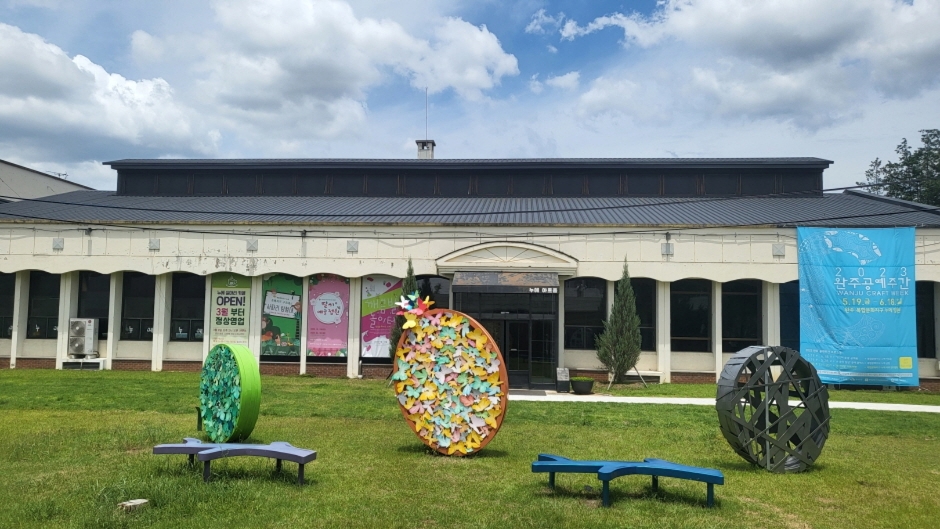
 Français
Français
 한국어
한국어 English
English 日本語
日本語 中文(简体)
中文(简体) Deutsch
Deutsch Español
Español Русский
Русский